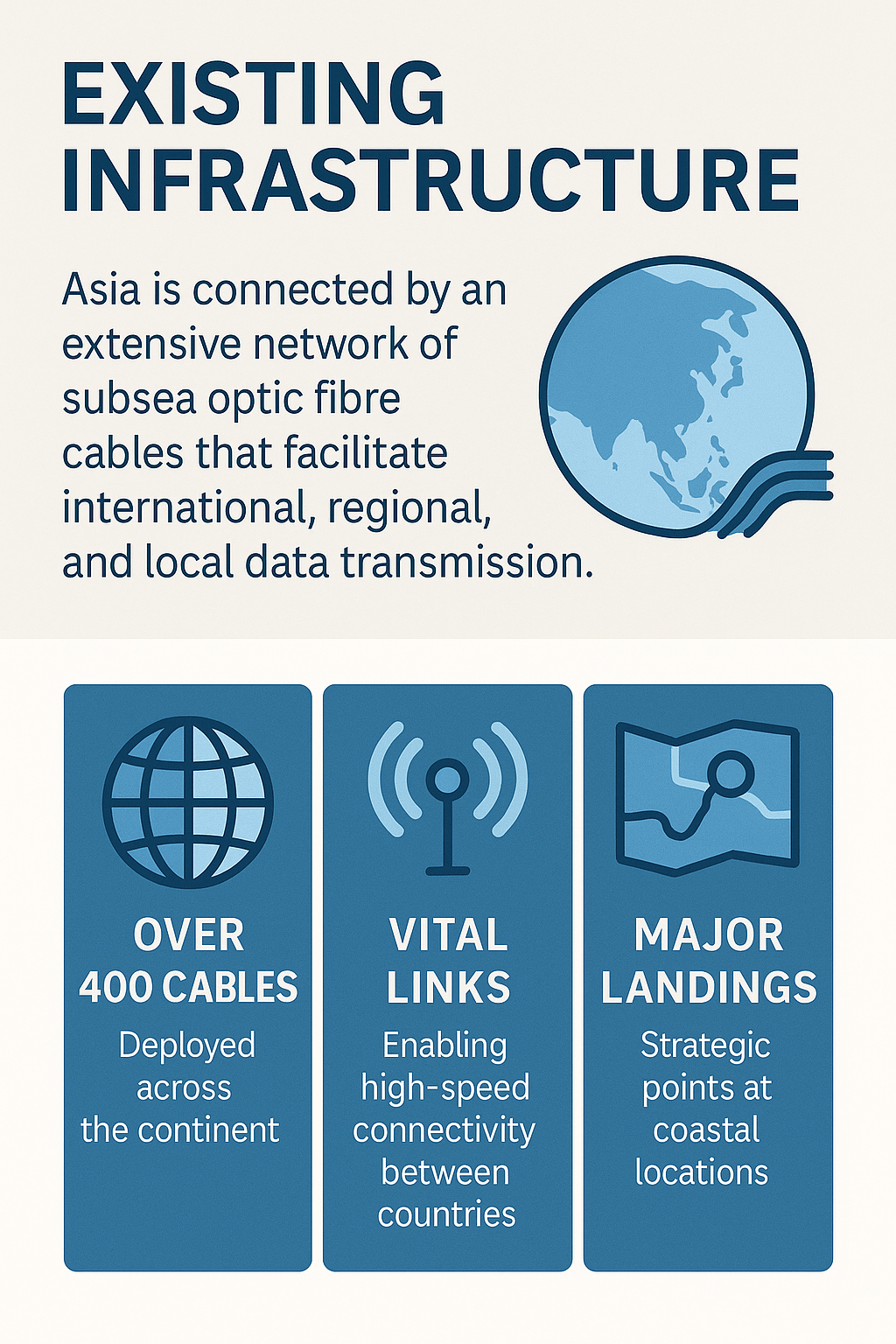Existing Infrastructures on Undersea / Subsea Cables

Asia’s existing subsea cable infrastructure is both extensive and rapidly evolving. The region is home to over 400 subsea cable systems either active or planned, with key landing points in Singapore, Hong Kong, Tokyo, Chennai, and Busan. These locations serve as regional connectivity hubs, linking Asia to Europe, North America, the Middle East, and increasingly, Africa. The backbone of digital communication in Asia depends on this dense and complex network, which supports everything from cross-border trade to streaming services and remote work. Singapore in particular hosts more than 25 active cable systems, making it one of the world’s most connected cities for international bandwidth. This has enabled the growth of a thriving data center and cloud ecosystem, with subsea infrastructure acting as the foundation. Similarly, Japan and South Korea host multiple landing stations that link to North America and Russia, forming the eastern flank of the global internet highway. India’s infrastructure is concentrated around Mumbai and Chennai, which serve as critical junctures for East-West data flows. However, ageing cables and bottlenecked routes have created vulnerabilities, prompting a wave of infrastructure upgrades and diversification. Many operators are decommissioning legacy cables and deploying newer, high-capacity systems with lower latency and better earthquake resistance. Governments and private players are also investing in redundant paths and mesh networks to increase resilience. As Asia continues to digitise, the evolution of its existing subsea infrastructure remains a top priority to ensure reliability, security, and scalability.



